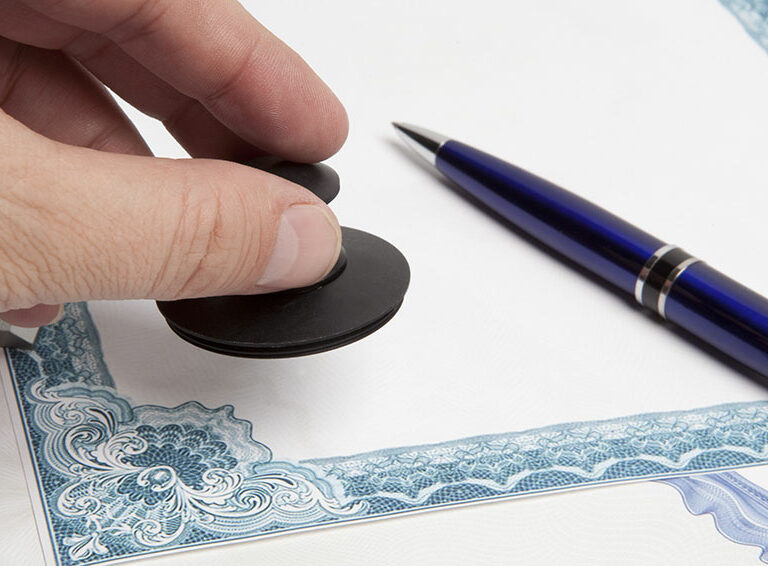Translation and Legalization in Thailand. If you need a document to work in Thailand (marriage, visa, land transaction, court file) or to use a Thai document abroad, two technical but tightly linked processes matter: accurate, auditable translation and proper legalization/authentication. Thailand is not an Apostille country, and Thai authorities treat translation formality and the chain of authentication as legal gatekeepers — get either one wrong and an otherwise valid document will be rejected. Below you’ll find the exact chains for the two common directions, who Thai authorities accept as certifiers, sample attestation wording, realistic timings and the checklist you should give to a translator or lawyer before you start.
The single legal fact you must start from
Thailand is not a party to the Hague Apostille Convention. That means you generally cannot rely on an apostille to make a foreign public document valid in Thailand; instead you use a consular/legalization chain that typically includes the issuing authority’s authentication, the Thai embassy/consulate in the issuing country and final legalization (often at the Thai MFA). Conversely, Thai public documents that will be used overseas normally need MFA legalization first and then legalization by the foreign embassy in Bangkok (unless the destination accepts an apostille — not applicable to Thailand’s side).
Who does the final check in Thailand?
The Ministry of Foreign Affairs (MFA) — Legalization Division in Bangkok is the central Thai office that reviews and legalizes document chains and translator attestations for many purposes; other steps (Thai embassy legalization abroad, consular steps in the origin country) are part of the chain when required. Contact details and the MFA’s legalization service hours are published on the MFA site; they also publish the specific forms and requirements for submissions.
Two practical flows (step-by-step)
A — Using a foreign document in Thailand (example: U.S. birth certificate → marriage registration)
-
Obtain the original from the issuing authority.
-
Local authentication / notarization required by the issuing country (e.g., state Secretary of State + U.S. Department of State if you are using a U.S. vital record). Embassies give clear, country-specific steps — follow the Royal Thai Embassy instructions for that jurisdiction.
-
Legalization at the Royal Thai Embassy/Consulate in the issuing country (many Thai missions require this before Bangkok will accept the file).
-
Translate into Thai (if the receiving Thai authority requires Thai) and have the translation certified by an accepted certifier (see next section).
-
Submit original + embassy-legalized copy + certified Thai translation to the Thai MFA Legalization Division for final authentication (unless the receiving office accepts the embassy stamp alone). Expect the MFA to verify the chain and the translator’s attestation.
B — Using a Thai document abroad (example: Thai diploma → use in Switzerland)
-
Get the Thai original certified by the issuing Thai authority (university, Amphur, Land Office).
-
Have the document translated into the destination language or English, and get a certified translation.
-
Legalize at the Thai MFA (Legalization Division) so the foreign embassy in Bangkok can accept the Thai official’s signature.
-
Present the MFA-legalized package to the destination country’s embassy/consulate in Bangkok for their consular legalization (unless the destination accepts Thai documents by apostille; check embassy rules). The foreign embassy will apply its consular stamp.
Who may certify translations in Thailand (accepted practices)
Thailand does not publish a single country-wide list of “sworn translators.” In practice the authorities consistently accept:
-
Notarial Services Attorneys (NSAs) — licensed Thai lawyers authorised to certify translations and perform notarial acts; they are the practical equivalent of a “sworn translator/notary” for many government offices. Use an NSA when you need the highest certainty for MFA/legal/land use.
-
Embassy-approved translators — many foreign missions publish lists of translators they accept for documents presented to that mission; if your document will go to a particular embassy (e.g., for visa or family-law use), use a translator from that embassy’s approved list.
Operational rule: ask the receiving Thai office (Amphur, Immigration, Land Office, university) if they require an NSA or will accept an embassy-approved translator. That single check prevents most rework.
What a translator’s attestation should say (practical template)
Give this exact wording to the translator on letterhead and insist on a signed, dated certificate with contact details:
“I, [full name], certify that I am competent in [source language] and Thai, and that this translation of ‘[document title]’, issued by [issuing authority, date], is a true and complete translation of the original. Signed [signature], [contact phone/email], [date].”
If an NSA certifies the translation, they should add a notarial attestation block and their Lawyers’ Council registration number — the MFA will expect to see both the translator and certifier details.
Realistic timings, fees & common rejection causes
-
Timings: embassy legalization steps abroad vary widely (days–weeks); the Thai MFA Legalization Division commonly quotes a multi-day turnaround (e.g., 3–7 working days depending on workload and whether express service is available). Always check the MFA and the relevant Royal Thai Embassy page for current service times.
-
Common rejections: wrong sequence (MFA sees no embassy stamp), missing translator attestation or missing contact details, illegible seals on originals, failure to use an embassy-approved translator where that embassy requires one. The simplest way to avoid rejection is to map the chain in advance (issuing country’s auth → Thai embassy step → certified translation → MFA) and tick off each stamp before you move to the next.
Practical risk-management (what counsel or your admin assistant should do)
-
Map the chain on day 1. Identify the issuing authority’s authentication, the correct Thai embassy/consulate to use, whether the receiving Thai office accepts English, and whether an NSA is required.
-
Use an NSA if the document will be used for: land transfers, company registry, court filings or family-law matters (marriage/divorce/adoption). It buys you strong administrative certainty.
-
Retain originals and high-quality scans. Keep a verified PDF with embedded metadata (date issued, file name) — ministries and embassies often ask for the original plus a copy.
-
Ask for a short cover letter from the translator/NSA describing what they certified and the destination authority’s name; include that cover letter when you submit to the MFA.
-
Book appointments early with embassies and the MFA — slots and lead times are real and vary by mission. Expect at least 1–2 weeks total for a straightforward foreign→Thailand chain.
Bottom line
Translation + legalization is a process, not a single stamp. Start by asking two simple, mission-critical questions: (1) Which office will receive the document in Thailand? and (2) Does that office insist on a Notarial Services Attorney or will it accept an embassy-approved translator? Answer those and you eliminate most delays.

